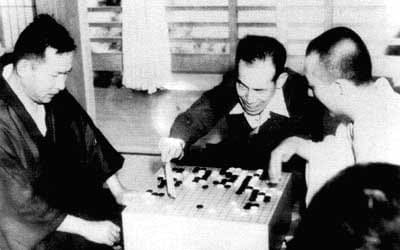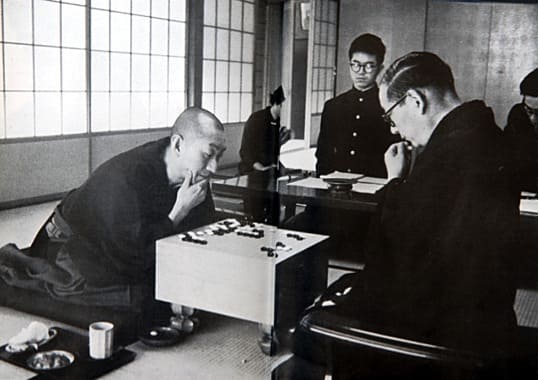Jubango
Ten-game match
Jubango is a match format in Go consisting of ten games played between two opponents. Historically, it was used to assess players’ relative strength and often involved dynamic handicap adjustments. These matches were considered prestigious and were a key part of competitive Go, especially during the Edo and Meiji periods.
Origins and Historical Use
Jubango became widely recognized during the Edo period, particularly for high-stakes challenge matches. Instead of using komi, these matches often followed the uchikomi system, where the handicap could change based on results. If one player won significantly more games, the handicap would be adjusted, keeping the competition intense and unpredictable.
In the Meiji period, jubango evolved into exhibition matches and a way for professionals to showcase their skills. Some were used for teaching, while others were publicly sponsored events. By the 20th century, jubango matches became major media spectacles, often sponsored by newspapers, which helped boost their popularity.

Winning a jubango was a significant achievement, often cementing a player’s reputation as the strongest of their era. A decisive victory, especially one that forced an opponent into a handicap position, was seen as a mark of superiority. Some of the most famous jubango matches were fought between Go Seigen and top Japanese professionals, shaping the landscape of professional Go in the mid-20th century.
Notable Jubango Matches
Many legendary players have participated in these high-stakes contests, showcasing their skill and determination. Key examples include:
- Go Seigen vs. Kitani Minoru (1939-41): A defining match that established Go Seigen as the dominant player of his era. Go Seigen went on to play a series of jubango against the strongest players of his time, defeating them all and solidifying his legacy as one of the greatest Go players in history.
- Honinbo Shuei vs. Murase Shuho (1884-86): A significant reconciliation match between two major players of the Meiji period, highlighting the competitive spirit of the era.
- Go Seigen vs. Hashimoto Utaro (1946-48): A comeback for Go Seigen after World War II, restoring his status as the top player.

In modern times, jubango remains a rare but prestigious format. One of the most notable contemporary examples is the 2014 jubango between Lee Sedol and Gu Li, two of the strongest players of the 21st century. Their intense rivalry and high-level play captivated the Go world, proving that the tradition of jubango still holds a special place in the modern era.
However, by the late 20th century, jubango became less common as modern tournament formats, such as title matches with best-of-series systems, gained prominence. While jubango is remembered as a cornerstone of Go history, long-format matches like these are now a rarity in professional play, reserved for exceptional occasions or historic rivalries.